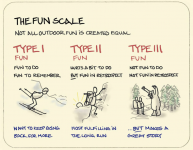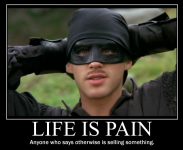Maou
Wuji
Having lurked a little here and there,I've noticed that more than a few of you train in MMA/Combat Sports as well as Chen Shi Taijiquan,so I wanted to ask about the nature of punching (hand strikes) in this art as compared to how you punch (with gloves) in Combat Sports...
Truth be told,part of the reason I got interested in Classical/Traditional Martial Arts (After witnessing numerous evidence of their effectiveness,I was a doubter at one point in my life) is because of Gloves and how they no doubt influence the nature of punching done in the ring. Genuine traditional//classical arts,I imagine,punch and do hand strikes with this reality in mind. Karateka punch differently than Boxers,as an example.
Do you guys punch differently than Boxers/MMA'ers? maybe you guys do your own form of hand/fist conditioning?
I won't ask for too much detail since I'm sure I'm going to get these lessons once I get the chance to sign up,but I would like to know if my impression is accurate,that when you guys punch,you do so in a way that not only delivers effective force,but do so in a way that is less likely to injure your fist?
Truth be told,part of the reason I got interested in Classical/Traditional Martial Arts (After witnessing numerous evidence of their effectiveness,I was a doubter at one point in my life) is because of Gloves and how they no doubt influence the nature of punching done in the ring. Genuine traditional//classical arts,I imagine,punch and do hand strikes with this reality in mind. Karateka punch differently than Boxers,as an example.
Do you guys punch differently than Boxers/MMA'ers? maybe you guys do your own form of hand/fist conditioning?
I won't ask for too much detail since I'm sure I'm going to get these lessons once I get the chance to sign up,but I would like to know if my impression is accurate,that when you guys punch,you do so in a way that not only delivers effective force,but do so in a way that is less likely to injure your fist?
Last edited:


